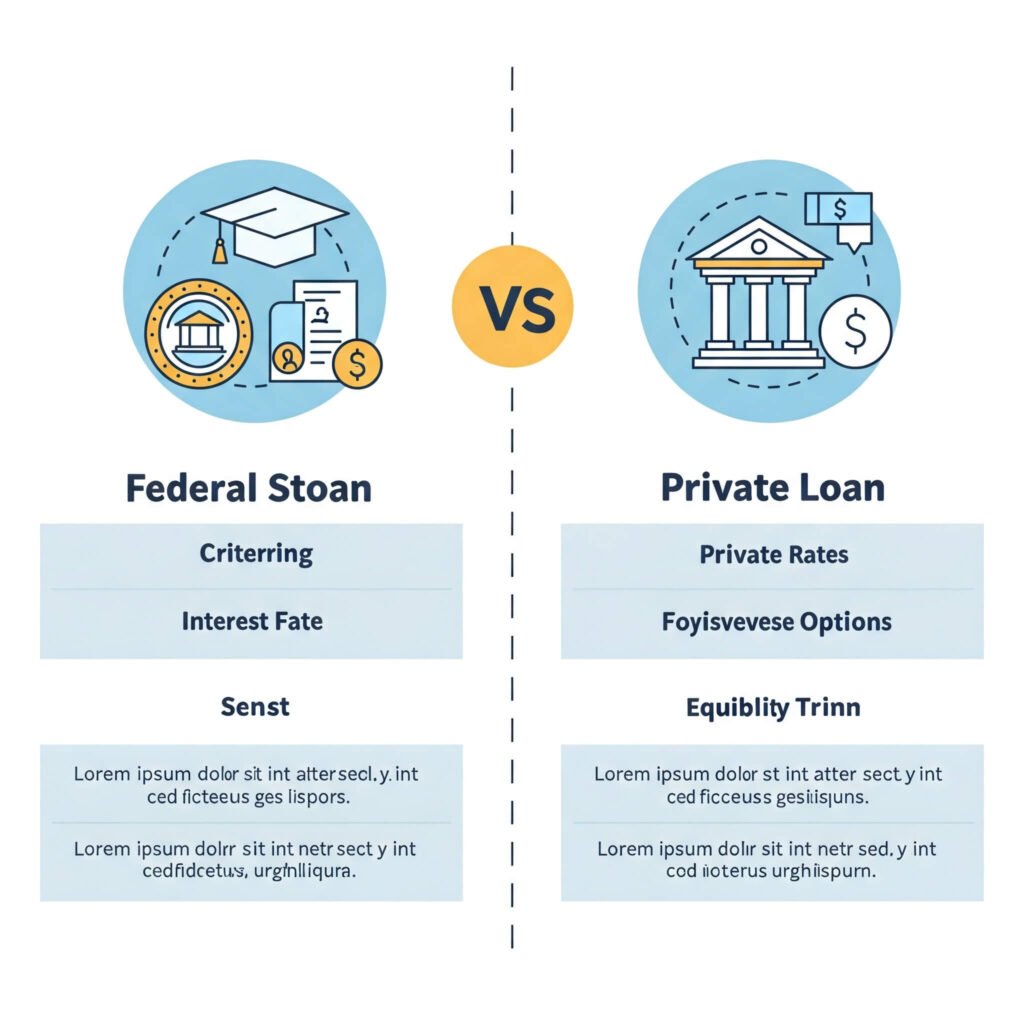Navigating the world of student loans can feel like deciphering a complex puzzle, especially when you’re trying to fund your education without breaking the bank. Whether you’re a high school senior planning for college or a graduate student pursuing an advanced degree, understanding student loans is critical to making informed financial decisions. This comprehensive guide breaks down everything you need to know about student loans, from types and applications to repayment strategies and forgiveness options, ensuring you’re equipped to finance your education confidently.
Why Understanding Student Loans Matters
Student loans are often the gateway to higher education, but they come with long-term financial implications. In the U.S., over 45 million borrowers owe a collective $1.7 trillion in student debt, according to Federal Reserve data. Without a clear understanding, you might end up with high-interest loans or repayment plans that strain your budget. This guide will help you avoid common pitfalls and make smart choices.

Types of Student Loans: Federal vs. Private
When exploring student loans, you’ll encounter two main categories: federal and private. Each has distinct features, benefits, and drawbacks.
Federal Student Loans
Federal loans, funded by the U.S. Department of Education, are typically the first choice due to their flexibility and borrower protections. Key types include:
- Direct Subsidized Loans: For undergraduates with financial need; the government pays interest during school.
- Direct Unsubsidized Loans: Available to all students; interest accrues immediately.
- PLUS Loans: For graduate students or parents, with higher interest rates.
- Perkins Loans (phased out but still relevant for some): For students with exceptional need.
Benefits:
- Fixed interest rates (e.g., 5.5% for undergraduates in 2023-2024).
- Income-driven repayment plans.
- Potential for loan forgiveness (e.g., Public Service Loan Forgiveness).
Private Student Loans
Private loans, offered by banks, credit unions, or online lenders like Sallie Mae, are a secondary option. They’re ideal for filling funding gaps but come with caveats.
Drawbacks:
- Variable interest rates (often 4%-15% based on credit).
- Fewer repayment options.
- Limited forgiveness opportunities.
Pro Tip: Exhaust federal loans before considering private ones to maximize benefits.

How to Apply for Student Loans
Securing student loans starts with understanding the application process. Here’s a step-by-step guide:
- Complete the FAFSA: The Free Application for Federal Student Aid determines your eligibility for federal loans, grants, and work-study. Submit it as early as October 1 each year.
- Review Your Aid Offer: Colleges send financial aid packages detailing loan amounts and terms.
- Accept Loans: Choose only what you need to minimize debt.
- Sign a Master Promissory Note (MPN): This legal document outlines your repayment obligations.
- For Private Loans: Compare lenders, check interest rates, and apply directly through their platforms.
Real-World Example: Sarah, a first-year student, completed her FAFSA and received $5,500 in subsidized loans. By accepting only what she needed, she avoided unnecessary debt.
Understanding Interest Rates and Loan Terms
Interest rates significantly impact the total cost of student loans. Federal loans have fixed rates, while private loans may offer fixed or variable options. For example:
- Federal Loans (2023-2024): 5.5% for undergraduates, 7.05% for graduate students.
- Private Loans: Vary widely based on credit score and lender.
Actionable Takeaway: Use a loan calculator to estimate monthly payments and total interest. Borrow only what you can afford to repay.

Repaying Your Student Loans
Repaying student loans can feel daunting, but strategic planning makes it manageable. Here are key options:
Federal Loan Repayment Plans
- Standard Repayment: Fixed payments over 10 years.
- Income-Driven Repayment (IDR): Payments based on income (e.g., 10%-20% of discretionary income).
- Graduated Repayment: Payments start low and increase over time.
Student Loan Forgiveness
Forgiveness programs can reduce or eliminate debt for eligible borrowers:
- Public Service Loan Forgiveness (PSLF): Forgives loans after 120 qualifying payments for public sector employees.
- Teacher Loan Forgiveness: Up to $17,500 for teachers in low-income schools.
- Income-Driven Forgiveness: Remaining balance forgiven after 20-25 years on IDR plans.
Pro Tip: Check StudentAid.gov for updates on forgiveness programs, as policies evolve.
Private Loan Repayment
Private loans offer fewer flexible options. Consider refinancing to lower interest rates if you have good credit, but note that refinancing federal loans removes federal protections.
Real-World Example: Mark, a nurse, enrolled in PSLF and had $30,000 forgiven after 10 years of payments while working at a nonprofit hospital.
Tips for Managing Student Loan Debt
To stay on top of student loans, adopt these strategies:
- Make Interest Payments During School: Even small payments reduce future costs.
- Set Up Autopay: Many lenders offer a 0.25% interest rate discount.
- Explore Side Hustles: Extra income can accelerate repayment.
- Avoid Default: Communicate with your lender if you’re struggling to make payments.
Data Insight: Borrowers who make payments during their grace period save an average of 10%-20% in interest over the loan’s life, per NerdWallet.
Common Mistakes to Avoid with Student Loans
Steer clear of these pitfalls when managing student loans:
- Borrowing More Than Needed: Only take what’s essential.
- Ignoring Interest Rates: Compare rates to minimize costs.
- Missing Payments: Late payments harm your credit score.
- Not Researching Forgiveness: You might miss out on valuable programs.
Conclusion: Take Control of Your Student Loan Journey
Financing your education with student loan doesn’t have to be overwhelming. By understanding loan types, applying strategically, and planning repayment, you can achieve your academic goals without financial stress. Start by completing the FAFSA, explore federal options, and create a repayment plan that fits your budget. With the right knowledge, you’re empowered to make decisions that set you up for long-term success.
Call to Action: Have questions about student loans? Share your thoughts in the comments or consult a financial aid advisor to personalize your plan!
outbound links:
- Federal Student Aid (FAFSA) – Official U.S. government site for student loan and grants.
- U.S. Department of Education – Policy updates and loan program details.
- Consumer Financial Protection Bureau (CFPB) – Guides on student loan repayment and scams.
- Bankrate Student Loans – Interest rate trends and refinancing options.
- Investopedia – Student Loans 101 – Financial breakdown of loan types.
- Public Service Loan Forgiveness (PSLF) – Official PSLF eligibility guidelines.
- FinAid Loan Calculator – Estimate monthly payments.
- Federal Loan Simulator – Compare repayment plans.




